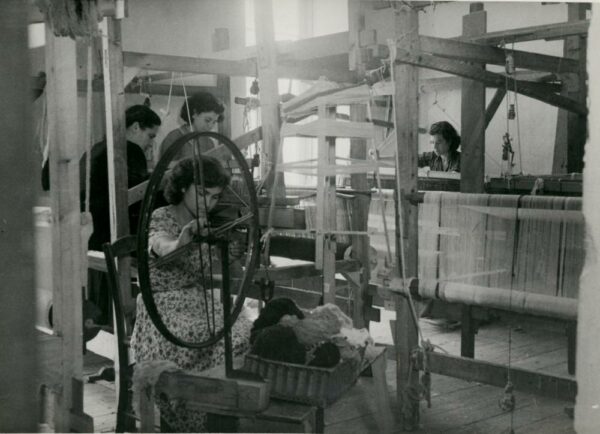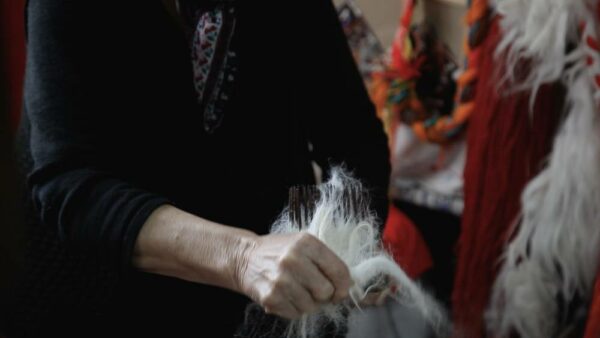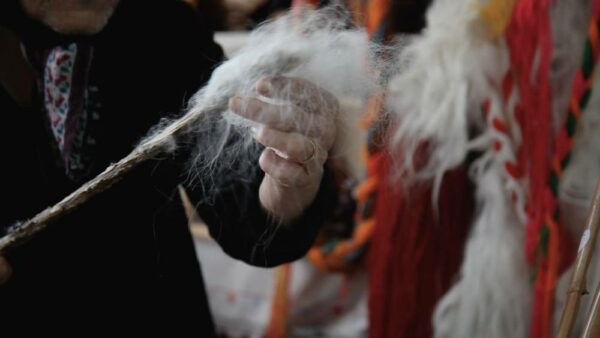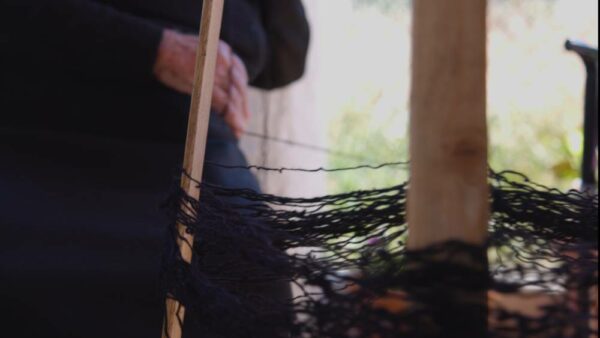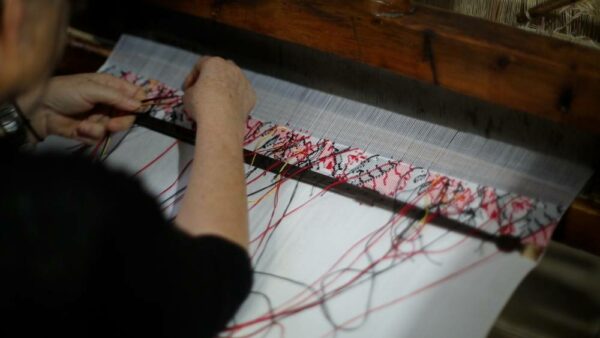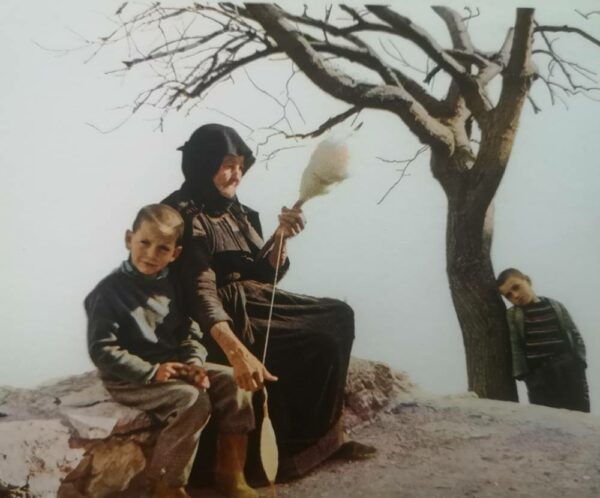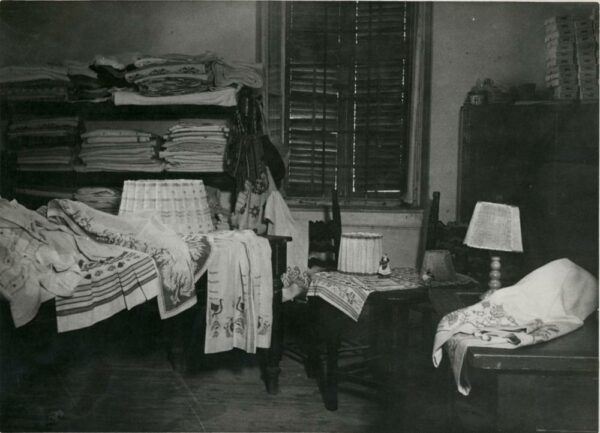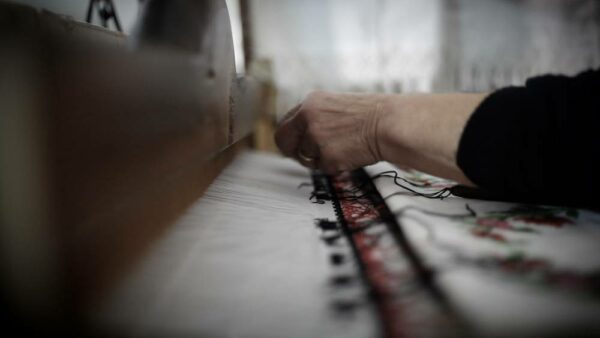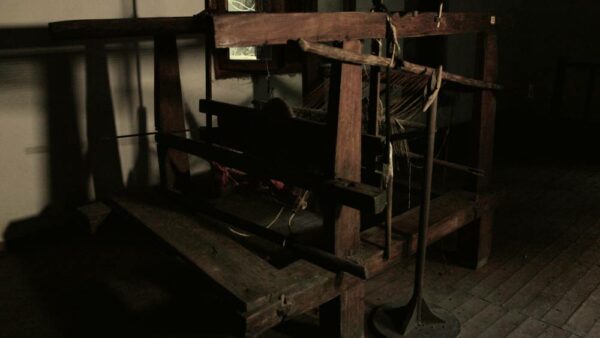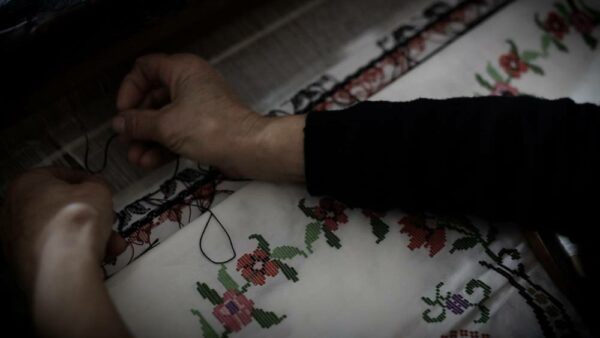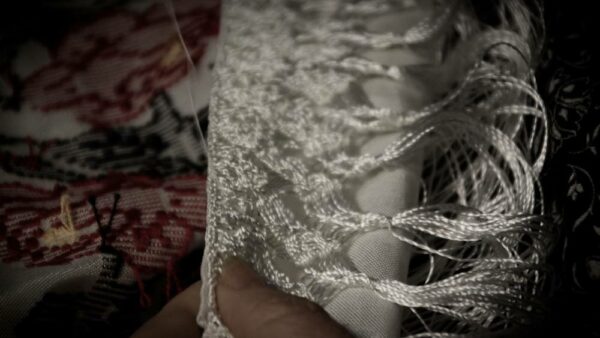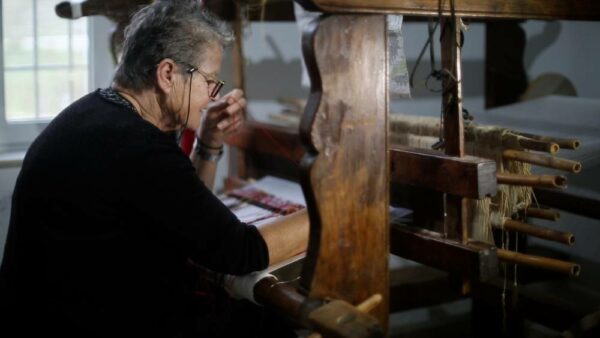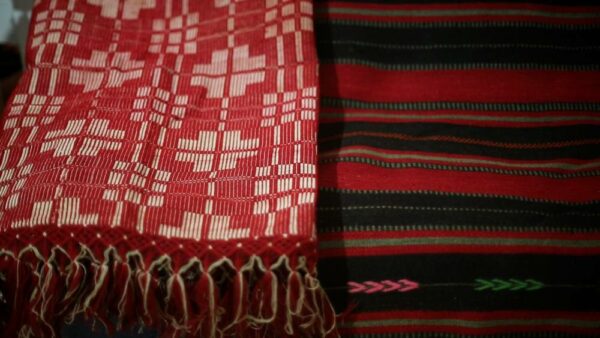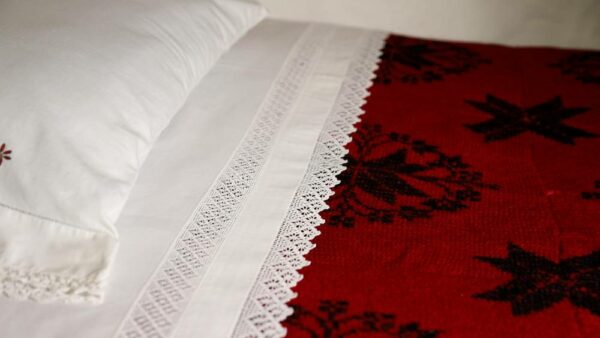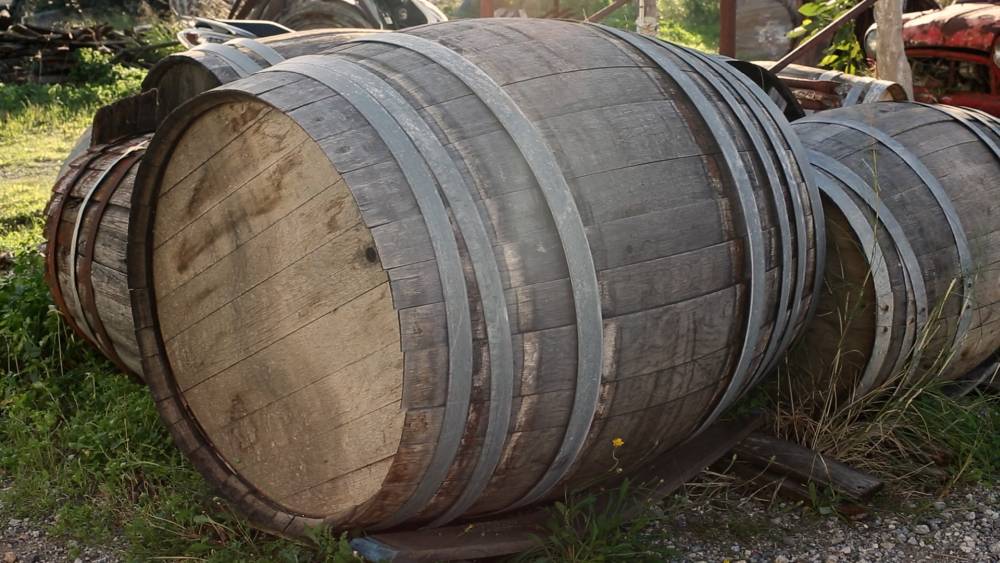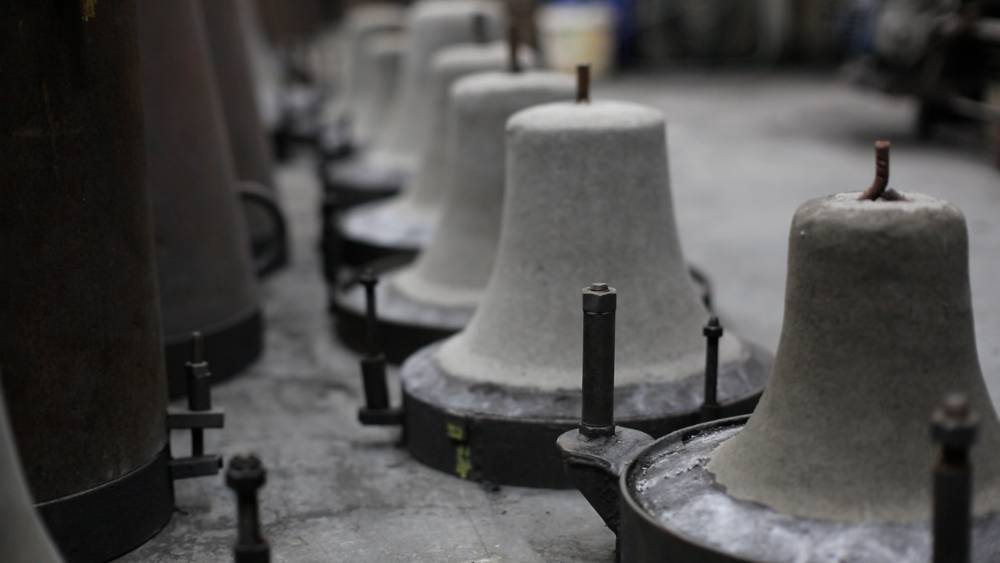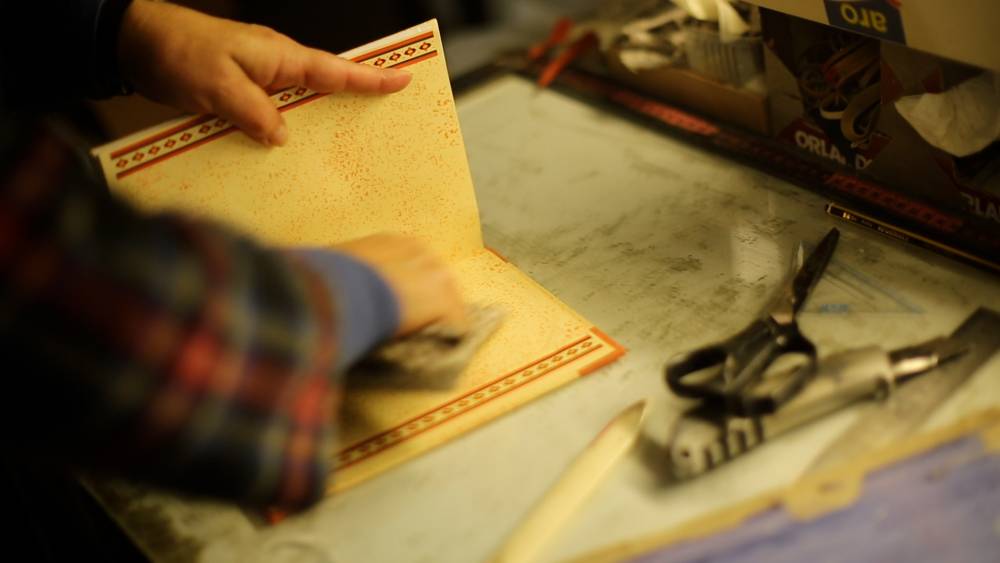Description
Man first conceived the idea of knitting and creating surfaces with the help of thin and flexible woods. This is how basket weaving was invented. Later people began to process wool, cotton, flax and silk and to make yarn. With these yarns and by making various knitting combinations, the weaving and the weaving tool called the loom was invented.
The loom was created out of the need for these threads to be knitted, to be stretched. In Crete the seated type of loom was used, a wooden construction in the shape of a rectangle. In this construction, two wooden cylindrical shafts were fixed, called “antia” around which threads called “stimonia” were wrapped and kept stretched.
The weaver sat on the one side of the loom having her body inside this wooden construction and with the help of her hands and feet, passing other threads perpendicular to the threads with the help of the heddle (saita), created the fabric. Using her feet, she was able to press four treadlers with the help of which the threads were moved and so the heddle each time passed between different combinations of positions of the threads, thus forming its fabric and patterns.
The fabric had to be densely woven, thus it was beaten with the help of a reed. The weaver, depending on her knowledge, could make blankets (patanias) with linear decoration or uncluttered, towels, sheets (khramia), woolen and cotton rucksacks and sacks, woolen fabric, capes for the shepherds etc.

